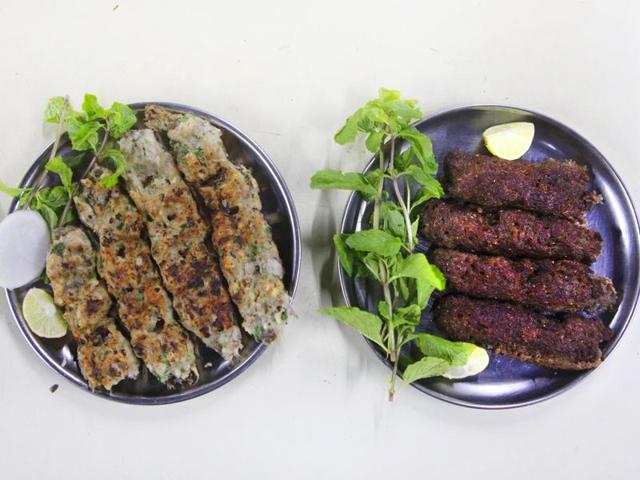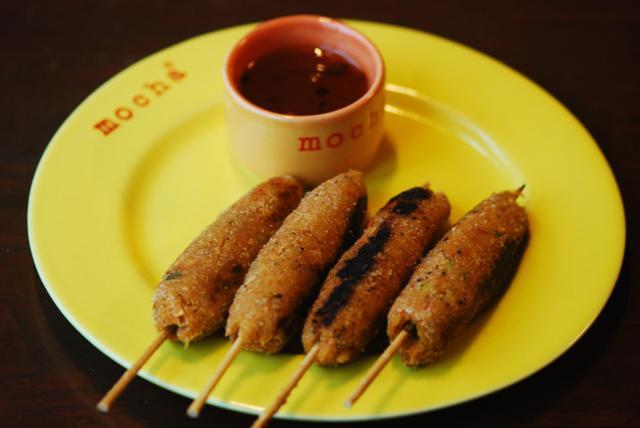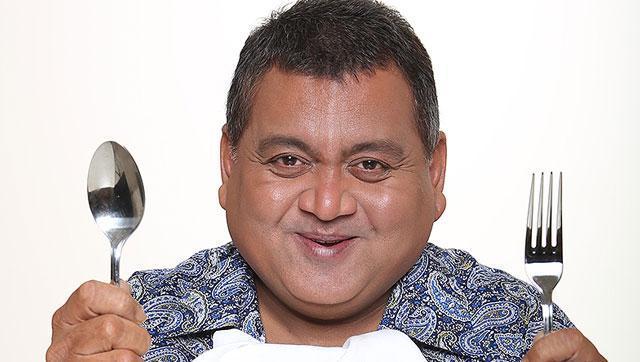Kunal Vijayakar takes us on a kebab trail across Mumbai
Kunal Vijayakar reveals some of the best places in the city to tuck into these versatile grilled delicacies
The North-West Frontier Provinces and the Afghanistan-Pakistan border area has, in its times, defended more secrets than Osama bin Laden’s whereabouts and the Haqqani network. I am talking about the closely guarded traditions of their cuisines.

Having inherited the culinary traditions of the Mughals, Turks, Central Asians and Iranians, they took to marinated meat on fire before the Australians made barbecues their national pastime. Hence, it wouldn’t be inaccurate to say that this region has single-handedly given us the kebab.
From a leg of lamb on a spit, the kebab in India has evolved into one of the most versatile non-vegetarian delicacies of all time. There are now so many kebabs that I myself have started loosely categorising them as red, white, brown and green. The chicken tikka is probably our most consumed kebab, followed closely by the shammi kebab and the seekh kebab.
So, let’s talk about this rudimentary yet, singular and, probably the most fundamental of all kebabs — the seekh. The word ‘seekh’, they say, comes from ‘shish kebab’, the Turkish words literally meaning skewer.
Christopher Columbus is said to have gorged on espetadas, a Portuguese seekh kebab marinated in wine and grilled on an open fire. The Thais serve satay, their version of barbequed meat on a skewer, while the Japanese devour yakitori, which is grilled skewered fowl. In French, the word brochette means skewer. Much like our seekh, which is also made on a skewer.
Eaten straight off the grill, the seekh kebab is fine lamb or water buffalo mince with coriander leaves, chopped onions, and select spices rolled on skewers and roasted on an open flame. When made well, with a generous amount of fat, a seekh kebab can melt in your mouth. Ignore the tubular, thin kebabs often available in restaurants and seek out the fat, podgy-yet-tender seekh that, in my opinion, is made best at only three places in Mumbai.

At Nagpada, opposite Nagpada police station, is Sarvi Restaurant. They have been rolling seekhs for over 40 years. It costs next to nothing to either sit in their air-conditioned section and order a plate with roti, chutney and kanda (onion) or stand on the pavement, where they actually make them, and take in the fragrance and flavour as they roast. Ask for the kainchi (scissors) seekhs, which are skewered on two instead of one flat skewer. I swear by these seekhs, and I keep going back to them year after year.
Outside Dadar station (East) stands the legendary Pritam Da Dhaba. Their seekh kebab is soft, plump and infused with finely chopped onions that remain slightly crunchy even after barbequing. It is tender, but with just that extra taste of garlic that you may or may not like. Being a slightly posher restaurant than Sarvi-on-the-street, the meat feels slightly more refined and cleaner, the kebabs more symmetrical, and the presentation enticing.
And, finally, on SV Road, Bandra, is Rajasthan — a large eating place that serves a good biryani and other Mughlai fare. Spicier, hotter and a little rough around the edges, these seekhs are in a category closer to Sarvi than Pritam, but not as good as Sarvi. Their seekhs are fatter and meatier. Served on a bed of onion and mint leaves, doused with lemon, they are satiating, succulent and tender.
In the old days, genuine Mughlai seekh kebabs were always made using beef. Nowadays, I am guessing they use water buffalo. I have come to accept them in mutton and lamb. But if made with chicken, I call it an aberration.

Author and TV show host Vijayakar is “always hungry”. He tweets as @kunalvijayakar
Catch your daily dose of Fashion, Health, Festivals, Travel, Relationship, Recipe and all the other Latest Lifestyle News on Hindustan Times Website and APPs.



